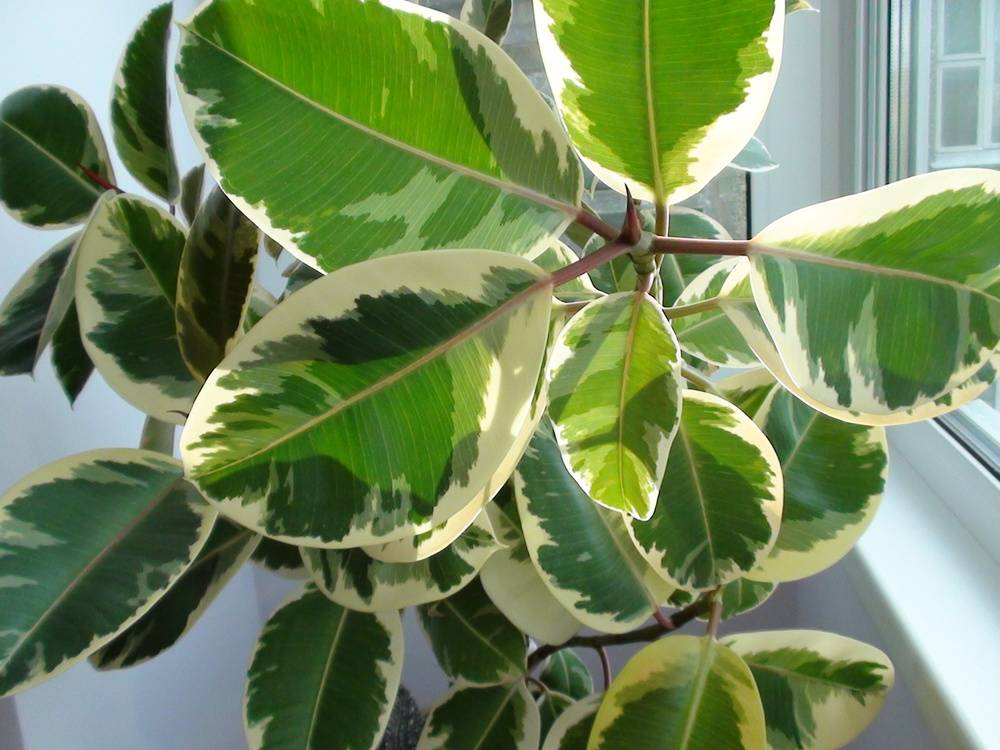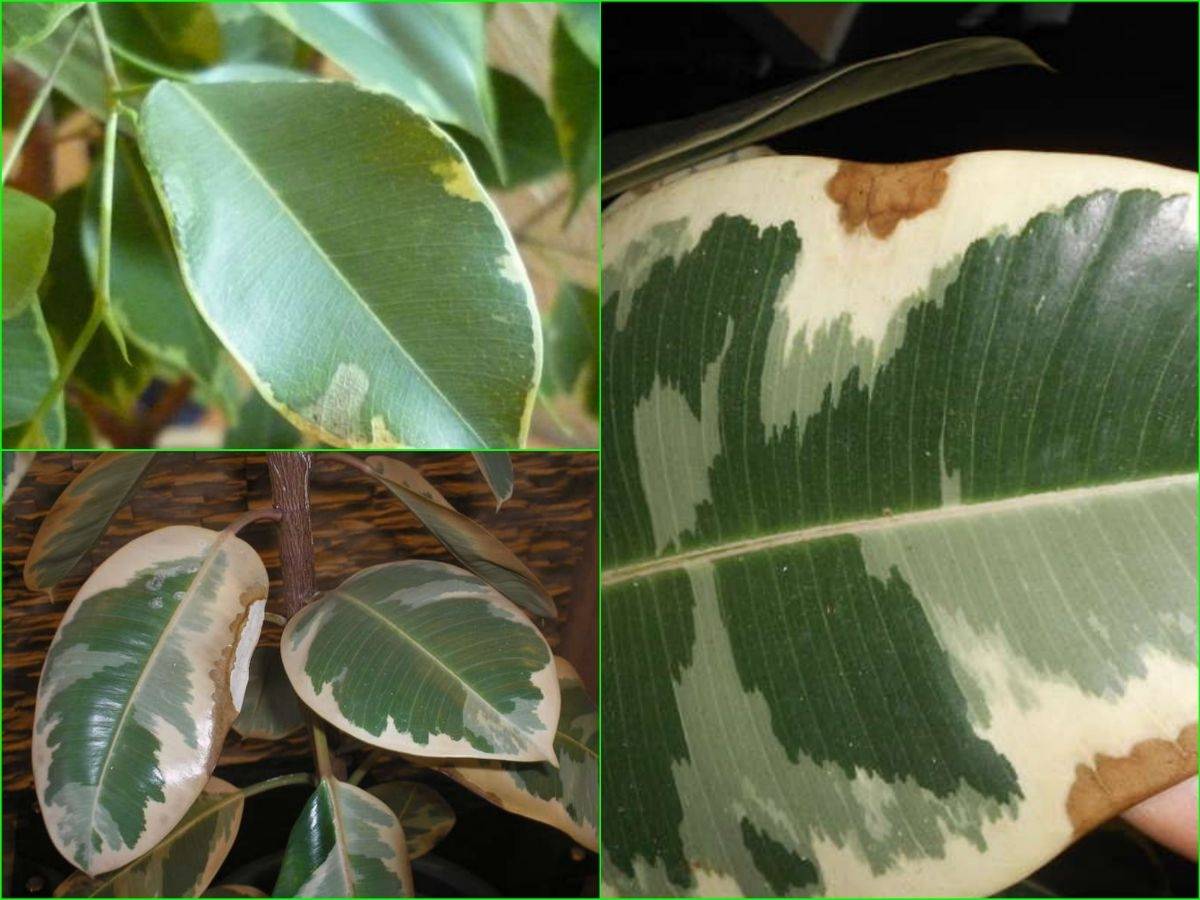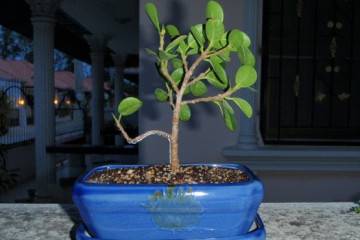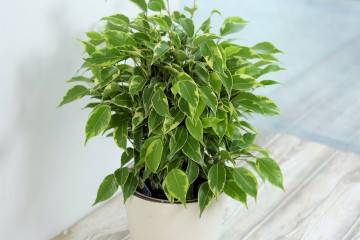Ficus Rubbery - description and rules of care
Content:
Ficus Elastica is an evergreen house plant. It is unpretentious in care, has good immunity and resistance to many pathologies.
What does the rubber ficus look like, which family does it belong to?
Ficus Elastica is considered a popular plant that is used to decorate rooms. The plant culture belongs to the Mulberry family, the homeland is India and Indonesia.
Common varieties
The following varieties of rubber ficus are distinguished:
- Robusta. Differs in thin leaves of light green color, which eventually darken to dark green. The size of the plate can be up to 50 cm in length and 20 cm in width. A characteristic difference of the subspecies is a pronounced central vein on both sides.
- Melanie. The leaves of this plant are glossy, their shade is rich green. In bright light, they acquire a red tint. The leaf plate is wide, the tips are slightly bent back. Unlike Robusta, it grows small - up to 50 cm.
- Burgundy. Ficus has purple leaves that reach 30 cm in length and 10 cm in width. The central vein is red, not very pronounced. The flower cap is bright red, the petiole is pink.
Healing properties
What are the useful properties of ficus:
- Cleans the air from harmful vapors, converts them into amino acids.
- Releases active substances that increase performance, restore sleep.
- Favorably affects the energy of the living space - it helps to cleanse the surrounding space from anger and anxiety.
- Paints the interior with beautiful green leaves.
Many skin pathologies can be treated with the leaves of the plant.
History of appearance
Ficus rubber, or elastic ficus, belongs to a species of plants in the Mulberry family. He arrived in Russia from northeastern India and Indonesia. In these countries, its dimensions were more impressive - up to 30 meters in height.
It received the addition "rubbery" to its name for obvious reasons. Isoprene is in the milky sap of the plant. From it, rubber is obtained, which is used to make rubber.
Features of home care
Competent care of rubber-bearing ficus at home will help to avoid the development of many pathologies.
Temperature
In spring and summer, keep the flower at an average temperature of up to 25 degrees Celsius. This indicator contributes to the correct development of the root system and an increase in the flowering period.
It is permissible to periodically take out ficus to hotter places where the temperature is kept at around 30 degrees.
In winter, the flower needs coolness and moisture, so it must be taken to a room where the air temperature is kept at a level not higher and not lower than 15 degrees Celsius.
Lighting
The plant culture is considered to be quite light-requiring. Therefore, the flower is kept in well-lit places. But do not allow direct sunlight to hit. This can harm the plant.
Watering
Ficus Rubber does not tolerate abundant watering. In the summer and spring, it should be watered with clean water up to 2 times a week. In winter, procedures are carried out less frequently: up to 1 time per week.
Spraying
Caring for ficus rubber at home is to carry out seasonal spraying. They are necessary to prevent the appearance of pests on the leaves and branches of the ficus.
Humidity
In order for the flower to develop, it must be placed in a room with good ventilation and moderate humidity levels. Excessive drought can harm the leaves of the ficus plant, as well as lead to its stunted growth.
Priming
Ficus broadleaf grows well in fertilized soils. Therefore, before planting, it is recommended to thoroughly process the land with top dressing with a high nitrogen content in the composition.
Top dressing
For the normal development of large-leaved ficus, organic and mineral fertilizers are needed. The former are used during the flowering period, namely in summer and early spring.
Features of care in winter, dormant period
The main difference in caring for Elastica ficus at different times of the year is feeding and watering. During flowering, the plant needs regular watering, spraying, organic feeding. During the rest period, all these care procedures are not needed. It is enough to periodically water the ficus.
When and how it blooms
Large-leaved ficus produces beautiful and fragrant inflorescences.
Types of flowers
The plant blooms with small buds of a light shade. Indoor species of ficuses do not differ in special beauty during flowering.
Flower shapes
The inflorescences are oval, the leaves in the buds are pear-shaped.
Flowering period
The formation of inflorescences can be observed in late spring or early summer, when the plant culture begins to branch. However, indoor breeds can rarely be made to bloom luxuriantly. It can only be seen on those ficuses that grow in botanical gardens.
Changes in care during flowering
There should be no cardinal changes in care when buds appear. If the plant begins to bloom, it is permissible to water a little more often than usual.
Pruning
Caring for rubber ficus at home consists in proper pruning. It is required to restrain the normal growth of the bushes. You will also need it in order to make the crown of the leaves more lush.
How rubber-bearing ficus reproduces
Inflorescences are propagated in several ways: cuttings, layering, seed germination.
Germinating seeds
For this, the seeds are soaked in a mineral solution for several days, then they are thoroughly dried and planted in a container. As the cuttings grow, you will need to change the pots to larger ones.
Rooting cuttings
The breeding procedure is carried out as follows:
- Cut the stalk to 15 cm.
- All leaves are removed from it, only the upper plates are left.
- Plant a branch in water, leave it for a while.
The root system begins to appear on the handle. This means that soon the plant can be transplanted into a separate pot.
Air layering
To propagate ficus, you need:
- Make an incision in the branch of the plant.
- Place a match in it to root the layers.
- Cover the structure with wet sphagnum, place a plastic bag on top.
- Secure everything with tape;
Other options
Periodically, in order to propagate the inflorescence, its leaves are used. However, this method is considered not the most proven. It often leads to the appearance of pests on ficus crops.
Transfer
A ficus transplant is necessary when it grows. When the plant stops growing, this procedure is stopped.
Possible growing problems and diseases
As you take care of the flower, you can face some problems.
Drops buds and leaves
The main symptom of a lack of minerals. In order for the leaves to stop falling off, it is necessary to fertilize with nitrogen and potassium fertilizers.
Leaves turn pale
To understand why pathology appears, it is necessary to carefully analyze the conditions of the plant culture. The reason may lie in the temperature unsuitable for the development of the leaf. It is worth moving the flower to a cool place with good ventilation.
The tips of the leaves dry
The problem indicates a lack of moisture. This happens most often during the flowering period. To eliminate the pathology, it is necessary to water the plant every 3 days for 10 days. Then take a break.
The lower leaves fall away
It is worth feeding the ficus with potash and organic fertilizers. You also need to treat the plates with prophylactic solutions and review your ficus care.
Pests
The appearance of insects indicates a poor immune system of the plant culture. It is necessary to spray with fungicides. This is best done in early spring.
Other problems
The owners may be faced with rottenness, yellowness of the leaves. All this speaks of improper care of the rubber plant at home. It is worth moving it to another place and carrying out vitamin supplements.
Signs and superstitions
According to ancient beliefs, the ficus is considered a flower that brings discord in relationships. In the house where it grows, quarrels, showdowns and unhappiness often occur.
Elastic ficus is a beautiful ornamental plant. It not only decorates the interior of the house, but also helps to cleanse it. According to the research, the flower contains active components that convert harmful fumes into amino acids and have a positive effect on the human body.




















